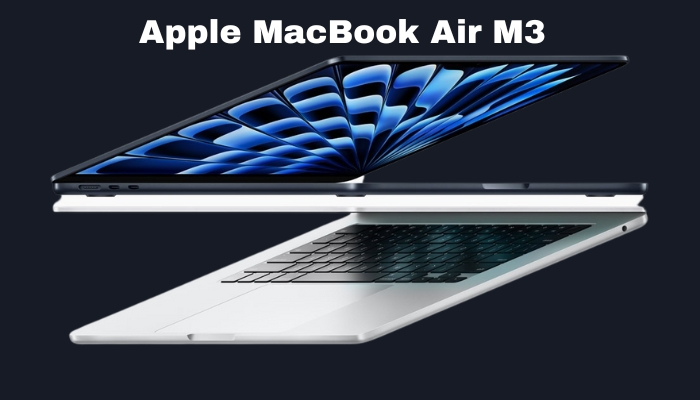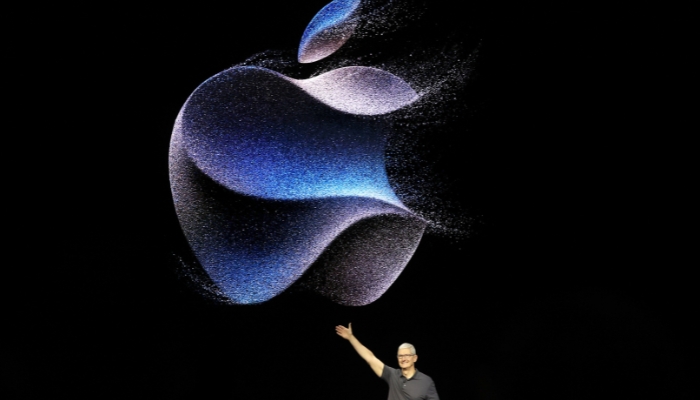
The latest folder is slimmer, lighter, and more affordable, boasting an almost imperceptible crease, posing a challenge to Samsung and Google.
OnePlus introduces its inaugural foldable phone, the Open, challenging Samsung and Google with a distinctive tablet-phone hybrid design. Priced at £1,599 (€1,849/$1,699.99), it surpasses the cost of OnePlus’s standard smartphones but remains £150 cheaper than Samsung and Google’s counterparts. While entering the ultra-premium gadget realm, the Open aligns more closely with the pricing of top-tier conventional models.
In the ever-evolving landscape of folding tablet-phone hybrids, the Open stands out as the most phone-like when closed. Featuring a 6.31in external screen, matching the size and shape of a regular flat phone, it is only 3mm thicker than a standard OnePlus, avoiding a bulky feel and presenting a sleeker profile compared to Samsung or Google’s offerings. Despite the noticeable camera bump covering nearly half the back glass when folded, the Open represents a promising evolution in form.
Unfold the phone akin to opening a book, revealing the nearly square 7.82in inside screen—a superb choice for apps, though less ideal for widescreen movies. The display matches the quality of Samsung’s top offerings: sharp, exceptionally bright, and smooth, featuring a 120Hz refresh rate. Notably, the central crease where the screen folds is the least conspicuous among its competitors. While a subtle indentation can be felt and seen under overhead lights if actively sought, it remains largely imperceptible in regular use.
The slender hinge unfolds seamlessly, supporting the internal screen at various angles, securely snapping shut with no noticeable gap between the halves when closed. With a durability rating of 1 million folds, it outperforms the latest Samsung and Google phones by five times. Despite this resilience, the OnePlus lacks official dust resistance and only offers splash water resistance—submerging it in the bath could pose potential issues.
Similar to other foldable devices, the screen comprises ultra-thin glass and plastic for flexibility. Caution is advised, as pressing firmly with a nail may leave marks, requiring a more delicate touch compared to traditional phones.
Specifications
Primary Screen: 7.82-inch 2K (426ppi) 120Hz AMOLED flexible display
Secondary (Cover) Screen: 6.31-inch 2K (431ppi) 120Hz AMOLED
Processor: Qualcomm Snapdragon 8 Gen 2
Random Access Memory (RAM): 16GB
Storage Capacity: 512GB
Operating System: OxygenOS 13.2 (Android 13)
Camera Setup: 48MP main, 48MP ultrawide, 64MP 3x telephoto; 32MP and 20MP front-facing
Connectivity Options: 5G, dual SIM, eSIM, USB-C, WiFi 7, NFC, Bluetooth 5.3, GNSS
Water Resistance: IPX4 (splash-resistant)
Folded Dimensions: 153.4 x 73.3 x 11.9mm
Unfolded Dimensions: 153.4 x 143.1 x 5.8mm
Weight: 239g
Fast chip, long battery life
Equipped with Qualcomm’s Snapdragon 8 Gen 2 chip, borrowed from the OnePlus 11 and other leading Android devices in 2023, the Open boasts a robust performance supported by a substantial 16GB of RAM—equivalent to laptop capacities. This configuration enables the foldable device to effortlessly manage a wide range of tasks, offering seamless multitasking capabilities. The Open exhibits impressive speed and responsiveness, complemented by a commendable battery life of approximately 46 hours between charges, aligning with the endurance of top-tier conventional smartphones.
Sustainability
OnePlus guarantees the battery for a minimum of 1,600 full charge cycles, retaining at least 80% of its initial capacity. While the phone lacks recycled materials, OnePlus facilitates general repairability, with screen replacements priced around £680 and batteries at approximately £99 plus labor. Although OnePlus features in Oppo’s annual sustainability reports, it does not provide a trade-in or recycling program in the UK.
The device operates on a customized iteration of Android 13 named OxygenOS, akin to other OnePlus phones. However, for the Open, OnePlus introduces a novel multitasking system, deviating from the approaches taken by other manufacturers when it comes to using multiple apps on the screen.
In this system, the “canvas” has the capability to virtually extend beyond the physical confines of the screen, enabling apps to maintain their full-size representation instead of being compressed into narrow or wide views when used concurrently. While engaged with one app, another can be smoothly pushed almost entirely off the screen, seamlessly sliding back into view upon tapping.
This innovative solution elegantly addresses the challenges posed by apps that don’t adapt well to resizing, providing a more expansive view of each app while accommodating simultaneous use of three or more. Facilitating easy addition or switching between multiple on-screen apps, a taskbar positioned at the bottom of the screen enhances user convenience.
The majority of the software aligns with Google’s approach to managing the multiple screens of the foldable device, lacking some of the advanced features that enhance the effectiveness of Samsung’s approach. Notably, the home screen is unified between the external and internal screens, unlike Samsung’s offering, which allows for distinct layouts on each screen.
A positive aspect is the ability to continue using apps from the internal screen on the external screen by swiping up on the cover screen. However, it falls short of Samsung’s option, which allows for the continued use of specific apps like Google Maps when the phone is closed. OnePlus does not have an equivalent to Samsung’s impressive “Flex mode” or a desktop computing “Dex” mode when connected to an external monitor.
In summary, the software on the Open is commendable, boasting slightly more capability than Google’s Fold and an excellent canvas system that simplifies multitasking. However, it doesn’t match the power and versatility of Samsung’s implementation.
OnePlus commits to providing four years of Android updates and five years of security updates, falling notably short of industry leaders like Google, which offers seven years of updates, and Fairphone’s impressive 10-year update support.
Camera
The substantial camera protrusion on the rear of the Open accommodates a 48MP primary camera, a 48MP ultrawide camera, and a 64MP telephoto camera featuring a 3x optical zoom. Additionally, the telephoto lens provides an extra 6x magnification by zooming in on the center of the sensor, employing a technique similar to recent Google and Apple phones.
Undoubtedly, the Open boasts the most impressive camera in the OnePlus lineup to date, presenting a formidable challenge to the Pixel Fold, a leader in the folding camera market, with only marginal differences in certain aspects. The primary camera excels, capturing abundant detail and adeptly managing mixed lighting conditions. The ultrawide lens performs reliably, and the telephoto lens produces commendable images at 3x in various lighting conditions, extending to 6x in bright light, with additional digital zoom capabilities.
However, all the cameras face some challenges with motion, particularly in dimmer lighting, resulting in photos that may lack sharpness if not handled carefully. While video capture is solid, it falls short of being the best available.
The selfie camera on the cover screen delivers satisfactory results, and the internal screen’s selfie camera proves excellent for video calls. Interestingly, users can utilize the main camera for selfies, using a viewfinder on the cover screen for significantly improved result
Verdict
The OnePlus Open strikes a balance between the form factors of established players Samsung and Google in the folding phone arena. It excels in offering a more compact, phone-like size when closed and a spacious square screen when open.
Notably, it is lighter and less cumbersome for typical phone tasks, introducing innovative approaches to multitasking on the tablet-sized internal screen. However, it falls short on some advanced features compared to its top competitors, resulting in a less powerful software experience.
Performance and battery life are commendable, and the internal screen displays the least visible fold crease yet—a notable improvement. The camera performs well, rivaling Google’s offering. The Open demonstrates a level of maturity, benefitting from OnePlus’s parent company, Oppo, having previously released two foldable devices. This places the Open as a third-generation product, not a mere initial attempt.
Concerns arise regarding durability, a common issue with foldables, exacerbated by the Open’s lack of proper water resistance. Additionally, OnePlus lacks a proven track record in handling cutting-edge technology or repairs. Extended software support, especially considering the device’s high cost, is also overdue.
Advantages: Seamlessly transitions between a phone and tablet, mimicking a regular phone when closed, minimal fold crease visibility when open, outstanding performance, impressive battery life, excellent camera capabilities, intriguing software concepts.
Disadvantages: Limited splash-proofing, a high price tag, heightened fragility compared to standard phones with expensive repair costs, software falls short of the capabilities found in leading competitors, and a relatively shorter update lifespan of five years from the initial release.





